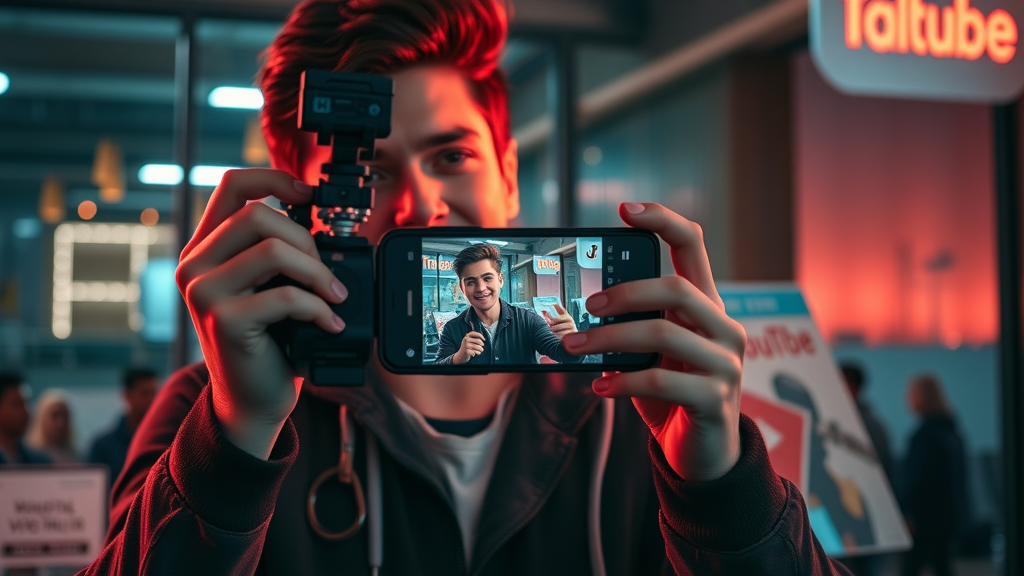- Discover how fast-rising businesses are leveraging alternative to PPC marketing plans for sustainable growth, and why you don't have to rely on costly PPC ads anymore.
- Did you know over 63% of marketers agree that alternatives to PPC marketing yield better brand awareness and ROI in 2024 ? Explore smarter strategies now.
Are you tired of pouring money into pay-per-click (PPC) ads, only to struggle for better ROI? You’re not alone. In 2024, a whopping 63% of digital marketers say that using an alternative to PPC marketing provides stronger brand awareness and more sustainable growth. If you’re seeking ways to break free from dependence on Google Ads and other ppc platforms, read on—you’re about to discover 11 powerful, cost-effective strategies that modern brands use to drive engagement, connect with their target audience, and protect their marketing budget!

Why Consider an Alternative to PPC Marketing: Beyond Traditional PPC Ads
- Understand market shifts and the costs of PPC ad saturation; learn when to choose a different advertising platform. Find compelling reasons many digital marketers opt for an alternative to PPC marketing , especially with the evolving landscape of google ads and emerging advertising platforms.
The digital marketing landscape is experiencing rapid transformation, rendering traditional PPC ad campaigns less effective for many modern brands. Costs per click are climbing, competition is fierce, and the once predictable flow of website traffic from ppc platforms like Google Ads is increasingly disrupted by market saturation and changing consumer behaviour. Businesses now report diminishing returns on ppc investments as more competitors bid for the same keywords, driving up prices and shrinking profit margins.
Emerging advertising platforms and evolving user expectations demand adaptable approaches. Digital marketing strategies can no longer rely exclusively on paid search or display. Instead, brands are re-evaluating their marketing mix and seeking alternatives that foster deeper engagement with their target audience, sustain results over time, and optimise budget use. Shifting emphasis from pay-per-click to organic, community-driven, and content-first tactics can offer stronger, longer-lasting returns—making alternatives to ppc marketing more attractive than ever for those searching for genuine, scalable growth.
What You’ll Gain from Embracing an Alternative to PPC Marketing
- See how adopting an alternative to PPC marketing can expand your reach, diversify your digital marketing mix, and protect your budget, while targeting a wider audience.
Making the switch to an alternative to ppc marketing opens up a world of opportunity. You’ll improve brand visibility across multiple advertising platforms, enabling you to reach potential customers where they naturally spend their time—whether that’s on social media, reading helpful blog posts, or participating in online communities. This diversification also insulates your marketing efforts from the volatility of any one channel and allows you to experiment, optimise, and refine messages according to platform-specific dynamics.
By reinvesting resources previously dedicated to ppc ads, you’ll also maximise your budget efficiency. Tactics like email marketing, influencer campaigns, and content marketing not only cost less per lead but can create compounding returns. With alternatives to ppc marketing, you also enjoy improved targeting, organic search growth, and higher levels of long-term engagement with your products or services.
| Approach | Avg. Cost Per Lead | Conversion Rate | Long-Term ROI | Platform Reach |
|---|---|---|---|---|
| PPC Ad Platforms (Google Ads, Microsoft Advertising) | £30–£75 | 2–5% | Short-term boost, declining over time | Dependent on ad spend |
| Email Marketing | £5–£15 | 10–20% | High (grows with list size) | Direct to subscribers; owned audience |
| Social Media Campaigns (Facebook Ads, Instagram, TikTok) | £10–£35 | 5–12% | Compounds with follower growth | Billions of monthly active users |
| Content Marketing (SEO, Blogs, Video) | £2–£20 | 5–30% | Very High (evergreen traffic) | Organic global reach |
| Influencer & Affiliate Marketing | Variable (Pay per result) | 10–30% | High if audience-product fit | Specific to each influencer/network |
1. Social Media Campaigns: The Leading Alternative to PPC Marketing

How Social Media Outperforms PPC Ads for Brand Engagement
- Harness advertising platforms like Facebook Ads, Instagram, and TikTok to create engaged communities and connect better with your target audience.
Social media marketing is a powerhouse in modern digital marketing strategy, providing an inherently interactive experience for your target audience—something ppc ads rarely replicate. Brands can use platforms like Facebook Ads, Instagram Stories, and TikTok videos to share compelling content, answer questions, and drive engagement naturally. High-performing ad campaigns on these platforms blend storytelling with visual appeal, which dramatically increases both organic and paid reach.
The global reach of social media advertising platforms is unmatched, offering billions of monthly active users to target specific demographics, interests, or behaviours—dramatically reducing wasted spend. Effective social media campaigns encourage sharing, comments, and brand mentions, making it easier to generate leads and nurturing organic growth well beyond what you might get from a solitary ppc ad. In today’s landscape, building an engaged social community is crucial if you want your marketing efforts to gain traction and scale quickly.
“Social media marketing delivers more personalised audience connections and brand loyalty than any traditional ppc ad.”
2. Email Marketing as an Alternative to PPC Marketing: Nurture and Convert

Why Email Marketing Trumps Many PPC Platforms for ROI
- Explore automation tools, segmentation tactics, and examples of how email marketing keeps your brand at the top of mind while increasing sales and loyalty.
Among all alternatives to ppc marketing, email marketing stands out as a consistent ROI leader. Unlike ppc platforms, you own your subscriber list—eliminating reliance on volatile ad algorithms or rising per click prices. Modern automation tools (like Mailchimp, HubSpot, or Klaviyo) enable brands to segment their audience, trigger highly relevant sequences, and measure results in real time. Email newsletters, transactional offers, and lifecycle campaigns keep your products or services visible, nurturing leads until they're ready to convert.
Personalising content for various customer segments enhances relevance and demonstrates that you understand your subscribers’ needs—a level of granularity that many advertising platforms struggle with. Moreover, the cost per email is negligible, making this channel highly efficient for driving repeat business and sustained customer loyalty compared to continuous spending on PPC ads.
3. Influencer Marketing: Trust and Reach without PPC Ads
Harnessing Influencer Power Instead of Relying on Advertising Platforms
- Learn about micro and macro influencer opportunities; see real-world influencer marketing results for brands seeking a cost-effective alternative to ppc marketing .
Influencer marketing offers brands a shortcut to authentic connection with targeted audiences—often at a fraction of PPC advertising costs. By aligning with trusted personalities who have established credibility and loyal followers, brands can bypass the noise of crowded advertising platforms and deliver their message directly, often in a way that feels more organic and less interruptive than a traditional ppc ad. There’s a strategy for every budget, from partnering with micro-influencers who have highly engaged, niche followings, to enlisting macro influencers for broader exposure.
This alternative taps into the proven power of social proof. Instead of competing for attention on search engine results with per click fees, you’re earning trust and advocacy through genuine recommendations. Tracking influencer-driven conversions and using specialised affiliate links allow brands to measure performance precisely—helping marketers allocate resources for the highest return.
4. Content Marketing: The Evergreen Alternative to PPC Marketing
Optimising Content for Search Engines versus PPC Ad Spends

- Unlock content marketing strategies: blogs, videos, infographics and whitepapers. Learn why strong SEO drives sustainable organic traffic beyond ppc platforms.
Content marketing builds brand authority and trust by offering helpful, engaging content that addresses real problems. Unlike fleeting ppc ads, a single well-optimised blog post can generate inbound website visits for years, bringing in new leads, nurturing prospects, and supporting every stage of your sales funnel. Whether you’re creating explainer videos, infographics, whitepapers or regular blog posts, quality content serves as currency in the attention economy—constantly working to move customers closer to a purchase decision.
The best-performing brands prioritise SEO to ensure their blog content and digital assets rank in relevant search engine results, widening their organic reach. Content isn’t just about writing—it’s about using keyword research, user intent, and distribution strategies to make sure each piece accomplishes more for less investment than any ppc platform ever could.
“Great content builds compounding value, unlike fleeting ppc ads.”
5. Native Advertising: Seamlessly Integrating Brand in Preferred Advertising Platforms
How Native Ads Offer a Subtle Yet Powerful Alternative to PPC Marketing

- Blend your message into news feeds and publisher networks for increased trust and engagement, leveraging native ad platforms instead of Google or Microsoft Advertising.
Native advertising brings branded content into users’ preferred digital spaces in a way that feels natural and engaging. Unlike the overt interruption of a ppc ad, native ads mimic the look and feel of their host platforms—whether that’s a news site, social network, or entertainment app. This seamless integration reduces the ‘banner blindness’ commonly associated with digital ads and helps brands win trust by providing value upfront.
When deployed through premium publisher networks or within popular mobile apps, native ads can reach new, contextually relevant audiences without the escalating costs often seen on traditional ppc platforms like Google Ads or Microsoft Advertising. As a result, businesses enjoy higher engagement rates, stronger brand perception, and better campaign longevity.
6. Programmatic Display Ads: Efficiency over Traditional PPC Platforms
Advantages of Automated Bidding Compared to Standard PPC Ad Buying
- Find insights into how programmatic display offers smarter targeting, real-time bidding, and analytics for scaling up outside classic ppc platforms.
Programmatic display advertising leverages advanced algorithms and real-time data to automate where and when your ads appear, optimising spend and improving conversion rates compared to standard PPC ad buying. This alternative to ppc marketing enables brands to reach highly targeted segments across multiple advertising platform partners, without having to manually adjust bids or placements for every campaign.
With access to extensive performance analytics, marketers can fine-tune future ad campaigns for even better results. Programmatic display fosters efficiency and scale, providing the transparency and agility required to drive meaningful results outside the confines of traditional pay-per-click strategies.
7. Referral and Affiliate Marketing: Leveraging Networks as an Alternative to PPC Marketing
Tapping into Affiliate Programs vs Channeling Budgets into Google Ads
- Break down best performing affiliate marketing tactics, platforms, and payment models; learn how this approach scales reach and boosts credibility without frequent ppc ad spends.
Referral and affiliate marketing zeroes in on performance-based results, meaning you only pay for actual conversions, not for every ad view or click. Instead of allocating a fixed budget to google ads or another ppc platform, you partner with networks of affiliates who promote your products or services to their audiences in exchange for a commission on each sale, signup, or qualified lead. This scalable alternative allows you to access new markets organically—powered by the trust affiliates have already built with their communities.
Common platforms supporting this strategy include Rakuten, Impact.com, and ShareASale. Successful affiliate marketing hinges on clear program terms, strategic partnerships, and ongoing optimisation. This approach eliminates most risks associated with unpredictable ppc advertising and provides detailed reporting on what’s truly driving results.

8. Video Marketing: Boosting Brand Awareness Beyond PPC Ad Tactics

Creative Strategies Using YouTube, TikTok & Reels in Your Alternative Marketing Mix
- See top-performing formats, storytelling approaches, and how video content creates authentic relationships with your target audience.
Video marketing has emerged as a leading alternative to ppc marketing in recent years, driven by explosive user growth on platforms like YouTube, TikTok, and Instagram Reels. Video allows brands to tell their story in a way that is dynamic, engaging, and easy to consume—perfect for creating authentic relationships, building trust, and driving shares. Top-performing brands use short-form videos, how-to guides, and behind-the-scenes content to captivate viewers and spark conversation within their target audience.
Video’s viral potential, especially on social media, enables organic growth on a scale that ppc ad campaigns can rarely match. Brands can capitalise on emerging trends, use interactive formats, and layer storytelling with calls to action to drive engagement, boost brand awareness, and achieve sustainable marketing success outside of traditional advertising platforms.
9. Organic Search Engine Optimisation (SEO): Long-Term Alternative to PPC Marketing
Achieving Visibility and Clicks without Google Ads
- Explore keyword research, backlink outreach, and onsite technical SEO and how they serve as a stable foundation for web traffic vs ppc ad platforms.

SEO (Search Engine Optimisation) remains one of the most effective, sustainable alternatives to PPC marketing. By optimising your website, blog posts, and landing pages to rank high in organic search results, you can consistently attract qualified visitors with high intent, totally independent from advertising spend. A strong SEO strategy incorporates keyword research, backlink building, content optimisation, and technical improvements for better search engine visibility.
Unlike ppc advertising—where traffic drops as soon as you stop spending—well ranked content in the search engine result pages continues driving visits and conversions over the long term. For brands willing to play the long game and invest in continuous improvements, SEO is both cost-effective and a reliable cornerstone of any digital marketing strategy.
10. Community Building: Social Proof as an Alternative to PPC Marketing
Fostering Brand Loyalty through Engagement, Not Ads
- Develop and nurture engaged online communities (forums, Slack, Discord). Community members become brand ambassadors, driving organic growth.

Community building provides a wholly different dynamic than PPC ad campaigns, focusing on peer-to-peer support, conversation, and brand advocacy. Platforms like Slack, Discord, or bespoke brand forums help cultivate active users who become natural promoters and referrers, often driving engagement and signups at higher rates, thanks to trusted recommendations.
Communities give loyal customers opportunities to provide feedback, help each other, and showcase product or service use in real-world contexts. This generates invaluable social proof, increases retention, and compounds your marketing impact—making it a powerful, low-cost alternative to conventional advertising platforms.
11. Hybrid Approaches: Maximising Outcomes by Combining Alternatives to PPC Marketing
Integrating Email Marketing, Social Media, and Content for Synergy
- Proven campaign examples and tactics for fusing two or more alternatives—delivering better results than sticking to a single ppc platform.
The most successful brands rarely depend on just one marketing channel. Instead, they combine the strengths of several alternatives to ppc marketing—like deploying social media campaigns to amplify engaging blog posts, or supporting email marketing with user-generated video testimonials. For example, integrating SEO-optimised content with email nurture sequences and influencer partnerships ensures that brands remain visible at every stage of the buying journey.
Hybrid strategies not only multiply your marketing efforts but also deliver resilience against shifts in any single channel’s efficiency or performance. Developing a holistic approach increases your reach, maximises conversions, and fosters brand advocacy—making your marketing mix stronger than any standalone ppc ad campaign.
Is SEO or PPC Better?
- Examine the strengths, weaknesses and best use cases of both approaches; understand when each alternative to PPC marketing makes sense.
SEO provides lasting results that compound over time, making it a smart investment for sustainable growth and organic reach. It’s best for brands looking for high-quality leads via search engine results. PPC offers immediate visibility but at a constant cost—the benefits stop when the budget ends. The optimal strategy combines both: use PPC for fast test campaigns or launches, then transition into organic channels for ongoing lead generation and market share retention.
What is a Substitute in Amazon PPC?
- Explore Amazon SEO, affiliate marketing, and social media campaigns as high-performing alternatives to Amazon’s PPC platform .
Substitutes for Amazon PPC include optimising product listings (Amazon SEO), leveraging affiliate partnerships, and tapping into social media to reach targeted buyers. These alternatives help your products appear higher in Amazon search results, drive more organic reviews, and create a steady stream of qualified traffic—often at much lower costs than running continual pay-per-click ad campaigns.
What's the Difference Between PPC and SEM?
- Clarify the definitions—SEM embraces all search engine marketing (organic and paid), while PPC marketing refers solely to pay-per-click ads.
SEM (Search Engine Marketing) is a broad term encompassing both organic strategies (like SEO) and paid tactics (such as PPC ads on google ads or microsoft advertising). In contrast, PPC marketing is focused entirely on “pay-per-click” ads—meaning you pay each time a user clicks your ad. In practice, SEM aims to improve visibility in search engine results via every available method, while PPC is strictly about paid placement.
What is the Difference Between PPC and CPC Marketing?
- Unpack the key distinctions between “pay-per-click” and “cost-per-click” models and how alternatives align with broader digital marketing goals.
PPC (pay-per-click) is a model where you pay each time someone clicks on your ad, usually through an auction-based advertising platform. CPC (cost-per-click) is a metric describing the average price paid for each of those clicks, used to evaluate efficiency between various campaigns and platforms. By switching to an alternative to ppc marketing, you can decrease your overall CPC and reinvest savings into scalable strategies like email marketing or content development.
Frequently Asked Questions on Choosing an Alternative to PPC Marketing
- How fast can results be seen with alternatives to PPC marketing?
- Are these strategies suitable for small businesses?
- What’s the best mix for B2B vs B2C brands?
“With rising ad costs, brands seeking sustainable growth are exploring a robust alternative to ppc marketing strategy.”
How fast can results be seen with alternatives to PPC marketing? Some alternatives, like email marketing or social media, yield results almost immediately as your audience engages with new campaigns. Others, such as SEO or community building, grow momentum over weeks and months—offering compounding returns in the long run. For the most balanced results, brands can combine quick-win channels with strategies for sustainable growth.
Are alternative strategies suitable for small businesses? Absolutely. Most alternatives require lower initial investment compared to a ppc ad campaign. Email marketing, content development, and organic social outreach can all be tailored to fit modest budgets, allowing even small teams to compete for visibility and engagement without incurring runaway costs.
What’s the best marketing mix for B2B versus B2C brands? B2B brands often thrive with a content-first approach (think whitepapers, webinars, LinkedIn outreach) combined with targeted email campaigns and organic search. B2C brands typically find success blending social media, video, and influencer outreach—meeting consumers where they spend time online. Regardless of industry, the key is experimenting to find the best-performing mix for your unique brand and audience.
Expert Tips for Transitioning Away from PPC Ads to Alternatives
- Actionable steps for shifting budget, measurement frameworks, tools for tracking organic and referral success, plus advice on gaining buy-in from stakeholders.
Start by gradually reallocating budget from underperforming ppc ad campaigns to high-potential alternatives—run small-scale tests, then scale what works. Use analytics tools (e.g., Google Analytics, HubSpot, BuzzSumo) to track traffic, lead generation, and conversions from new channels. Share results with key stakeholders to build support, highlighting sustainable growth and improved ROI. Always document wins and adjust your digital marketing mix as your audience and brand objectives evolve.
Unlock Your Smartest Alternative to PPC Marketing Today
- Ready for cost-effective growth? Contact us to discuss your Display Ads Marketing Strategy.
Don’t let rising ad costs limit your vision—embrace a smarter alternative to ppc marketing and put your brand on the path to sustainable success!
Conclusion
Take action now: diversify your digital marketing strategy by piloting two or more alternatives today, and track engagement for smarter, more sustainable growth.
Exploring alternatives to PPC marketing can lead to more sustainable growth and improved ROI. For instance, the article “Top 10 Pay-Per-Click (PPC) Alternatives in 2025” discusses strategies like social media advertising, influencer marketing, and content marketing as effective substitutes for traditional PPC campaigns. ( theknowledgeacademy.com ) Similarly, “5 Alternatives To Pay Per Click (PPC) Marketing” highlights methods such as SEO, content marketing, and social media marketing, emphasizing their cost-effectiveness and potential for higher engagement. ( flow20.com ) If you’re serious about diversifying your marketing strategy, these resources offer valuable insights into effective alternatives to PPC advertising.
 Add Row
Add Row  Add
Add 




Write A Comment